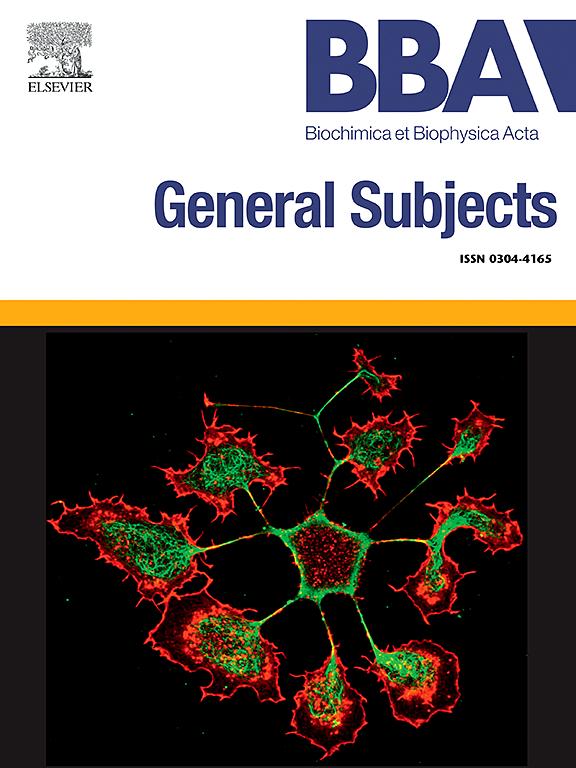Functional involvement of RNAs and intrinsically disordered proteins in the assembly of heterochromatin
IF 2.2
3区 生物学
Q3 BIOCHEMISTRY & MOLECULAR BIOLOGY
Biochimica et biophysica acta. General subjects
Pub Date : 2025-03-06
DOI:10.1016/j.bbagen.2025.130790
引用次数: 0
Abstract
Heterochromatin is a highly condensed chromatin structure observed in the nuclei of eukaryotic cells. It plays a pivotal role in repressing undesired gene expression and establishing functional chromosomal domains, including centromeres and telomeres. Heterochromatin is characterized by specific histone modifications and the formation of higher-order chromatin structures mediated by proteins, such as HP1 and Polycomb repressive complexes (PRCs), which recognize the specific histone modifications. Recent studies have identified the involvement of non-coding RNAs (ncRNAs) and intrinsically disordered proteins (IDPs) in heterochromatin, leading to the proposal of a new model in which liquid-liquid phase separation (LLPS) contributes to heterochromatin formation and function. This emerging model not only broadens our understanding of heterochromatin's molecular mechanisms but also provides insights into its dynamic regulation depending on cellular context. Such advancements pave the way for exploring heterochromatin's role in genome organization and stability, as well as its implications in development and disease.
rna和内在无序蛋白在异染色质组装中的功能参与
异染色质是在真核细胞细胞核中观察到的一种高度浓缩的染色质结构。它在抑制不需要的基因表达和建立功能性染色体结构域(包括着丝粒和端粒)中起关键作用。异染色质的特点是特异性组蛋白修饰和高阶染色质结构的形成,这些结构由蛋白质介导,如HP1和Polycomb抑制复合物(PRCs),它们识别特异性组蛋白修饰。最近的研究已经确定了非编码rna (ncRNAs)和内在无序蛋白(IDPs)参与异染色质,导致提出了一个新的模型,其中液-液相分离(LLPS)有助于异染色质的形成和功能。这个新兴的模型不仅拓宽了我们对异染色质分子机制的理解,而且还提供了对其依赖于细胞环境的动态调控的见解。这些进展为探索异染色质在基因组组织和稳定性中的作用及其在发育和疾病中的意义铺平了道路。
本文章由计算机程序翻译,如有差异,请以英文原文为准。
求助全文
约1分钟内获得全文
求助全文
来源期刊

Biochimica et biophysica acta. General subjects
生物-生化与分子生物学
CiteScore
6.40
自引率
0.00%
发文量
139
审稿时长
30 days
期刊介绍:
BBA General Subjects accepts for submission either original, hypothesis-driven studies or reviews covering subjects in biochemistry and biophysics that are considered to have general interest for a wide audience. Manuscripts with interdisciplinary approaches are especially encouraged.
 求助内容:
求助内容: 应助结果提醒方式:
应助结果提醒方式:


